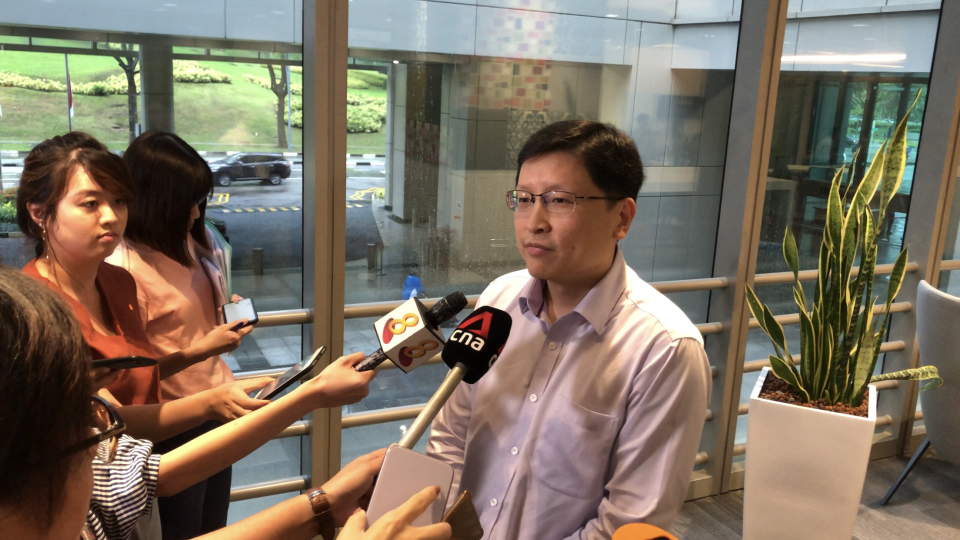Singapore loses No. 1 PISA global student ranking to China

SINGAPORE — China has edged out Singapore to top a triennial study that gauges the ability of students worldwide to use their knowledge and skills to solve real-world problems.
Sometimes dubbed the World Cup for Education, the Programme for International Student Assessment (PISA) is a study conducted every three years by the Organisation for Economic Cooperation and Development (OECD).
It assesses the ability of 15-year-old students to apply knowledge and skills in reading, mathematics and science. PISA also evaluates their ability to analyse, reason and communicate effectively as compared with their similarly-aged peers around the world.
Some 600,000 students from 79 countries and economies were assessed in the study.
A random sample of 6,676 students from Singapore - representative of different socioeconomic strata, ethnicity and performance levels, among others - took part in the 2018 study. All 153 public secondary schools and 13 private schools were involved.
For 2018, students from China - Beijing, Shanghai, Jiangsu and Zhejiang - finished above Singapore in all three categories. The Republic finished second in each category, followed by Macau.
Among others, the 2018 PISA study also revealed that, when compared with their international peers, more students here expressed a greater fear of failure. However, a higher proportion of them have confidence in their ability to complete tasks, even when facing difficult situations.
Like their international peers, students from a higher socioeconomic status (SES) here generally outperformed those from lower-SES homes. However, the latter still performed better than the average OECD students, and continued to do well in absolute terms.
The last PISA test in 2015 saw the Republic’s students ranked No 1 for mathematics, science and reading. The next highest scorers then were students from Japan, Estonia and Chinese Taipei (Taiwan).
Strong performance by Singapore students

Speaking to reporters on Monday (2 December) at the Ministry of Education (MOE), a day before the study results were released, deputy director-general of education Sng Chern Wei said the results showed that students here are well-equipped with critical skills that will serve them well in a rapidly changing and complex world.
“In particular, our students have maintained their very strong performance in reading, math and science. In fact, in reading, they actually showed a significant improvement from the 2015 study. And we are also very heartened that, compared to our international benchmarks, we have one of the highest proportion of top performers and one of the lowest proportion of low performers.”
Asked what he made of the Middle Kingdom finishing above Singapore at the top of the rankings, Sng replied, “We are happy that China is doing well. We didn’t take part in PISA to try to beat every country. We (do so) to learn important areas for improvement for ourselves. When other countries do well, we will continue to learn from them and try to make the educational experience and learning journey a more positive one and a more effective one for our students.”
In a Facebook post on Tuesday, Education Minister Ong ye Kung said, “Doing well in international rankings is not our end goal. But such benchmarking is useful to gauge where we stand internationally, and to reflect on where we can improve, such as making education more holistic, inculcating greater joy for learning, and creating an environment where failure is more accepted.”
Singapore has participated in the study since 2009. It does so in order to gain insights into how well students here are developing important skills and attitudes towards learning via-a-vis their peers internationally, according to MOE officials.
It is also a useful international reference to inform education policies and programmes, and provide insights into the school environments that Singapore students learn in.
Other global educational assessments that the Republic takes part in include Trends in International Mathematics and Science Study (TIMSS), which evaluates students from Primary 4 to Secondary 2, and Progress in International Reading Literacy Study (PIRLS), an international study of reading comprehension achievement among fourth graders.
Related stories
MOE responds to viral posts on student's PSLE results slip
PSLE results see slight dip in pupils eligible for Express course
Budget 2019 debate: Subject-Based Banding to replace streaming in secondary schools by 2024



